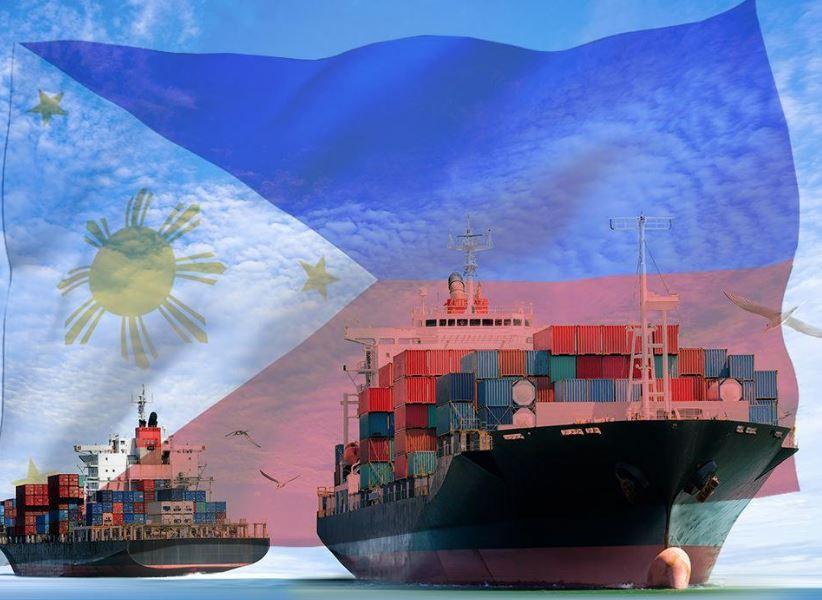Philippines’ balance of trade yields $3.29-billion deficit in July

The Philippines’ balance of trade in goods yielded a wider deficit in July as growth in imports outpaced the increase in exports amid the continued recovery in global trade from the disruption brought by the COVID-19 pandemic, data released by the Philippine Statistics Authority (PSA) showed Thursday.
Preliminary data released by the PSA showed the country’s trade gap amounted to $3.29 billion in July, wider by 54.1% from $2.134 billion in the same month last year.
The balance of trade in goods is the difference between the value of export and import.
A deficit indicates that the value of a country’s imports exceeded export receipts, while a surplus indicates more export shipments than imports.
Total external trade, the summation of imports and exports, amounted to $16.13 billion, up 19.2.8% from $13.53 billion in July 2020.
Imports accounted for 60.2% of the country’s external trade while the rest or 39.8% were exported goods.
“Philippine external trade for the month of July 2021 remains a bright spot for the Philippine economy despite the challenges brought about by the COVID-19 pandemic, with exports among record highs at $6.4 billion (near the record high of $6.8 billion posted in March 2021) and imports already among the highest levels since October 2019, or a few months before the pandemic, at $9.7 billion (or $1 billion away from the record high of $10.7 billion posted in October 2018),” Rizal Commercial Banking Corporation chief economist Michael Ricafort said.
“Faster economic recovery in some developed countries that are major export markets of the country especially where COVID-19 vaccine rollouts are much faster towards herd immunity could have supported faster recovery in global trade, including Philippine exports as seen in recent months, but could be offset by slower economic recovery prospects in other countries amid lockdowns and travel restrictions due to the surge in new COVID-19/Delta variant cases,” Ricafort said.
Exports
The country’s total export receipts stood at $6.42 billion, up 12.7% year-on-year due to annual increase in nine of the Philippines’ top 10 major export commodities led by coconut oil which grew by 207.7%.
This was followed by cathodes & sections of cathodes, of refined copper at 84.6%, and ignition wiring set and other wiring sets used in vehicles, aircrafts and ships at 28.6%.
Year-to-date, exports in 2021 amounted to $42.39 billion, which is higher than the pre-pandemic level of $40.82 billion in the same period in 2019.
“Our sustained export growth rate can be attributed to the recovery in the global markets, coupled with our efforts in ensuring that the exports manufacturing sector operate at 100% capacity even during the ECQ,” Trade Secretary Ramon Lopez said in a separate statement.
“The Philippines is clearly benefiting from its integration in Asia’s supply chains and the strong economic rebound in the region,” Lopez said.
Exports to China comprised the highest export value amounting to $1.04 billion or a share of 16.1% to the total exports during the month.
Completing the top five major export trading partners with their export values and percent shares to the total exports were United States of America (USA) at $1.03 billion (16.0%), Hong Kong at $875.16 million (13.6%), Japan at $847.88 million (13.2%), and Singapore at $360.40 million (5.6%).
Imports
The Philippines’ total imports amounted to $9.71 billion, up 24% year-on-year due to the increase in nine of the top 10 major commodity groups which was led by mineral fuels, lubricants and related materials with 84.9% increase.
This was followed by iron and steel with 62.9% growth and transport equipment with 59.7% increase.
Year-to-date, total imports value stood at $62.7 billion, up 30.2% from $48.91 billion in the same period last year.
China was the country’s biggest supplier of imported goods valued at $2.15 billion or 22.1 percent of the total imports in July 2021.
Completing the top five major import trading partners with their corresponding import value and percent share to the total imports were Japan at $997.61 million (10.3%), Republic of Korea at $761.27 million (7.8%), Indonesia at $691.08 million (7.1%), and Singapore at $607.22 million (6.3%).
“Imports could slow down in August 2021 in view of the ECQ in NCR from August 6-20, 2021 (followed by MECQ), consistent with the slowdown in overall economic/business activities,” Ricafort said.
He added that imports volume could pick up in the coming months amid the proposed more localized or granular lockdowns as de facto measures to further re-open the economy, “which could lead to some pick up in business/economic activities as well as in the country's importation requirements.”
General community quarantine with alert levels system or granular lockdowns were supposed to be implemented on September 8 in Metro Manila until the end of the month, but the government opted to retain the modified enhanced community quarantine classification in the region due to concerns on the guidelines on how to implement the policy. — BM, GMA News




